Intime Miyabi 雅 アンティーム Review – Uniquely Special
As some of my 18 readers may recall, I’ve been quite impressed by a prior Intime IEM model called SORA 2, which I wrote about one and a half year ago. That’s surely why when last summer I got notified that mr Watanabe had released some new IEM models, and in particular one supposed to be a sort of direct upgrade to the SORA project I didn’t hesitate much to order my pair of Intime Miyabi 雅 アンティーム.
At the time of this article, Miyabi sells on the manufacturer’s site for JPY 21.450,00 which is approximately $ 150. Add another $ 30 to have that reforwaded to EU / USA by a service like Tenso or equivalent.
“Intime Acoustic” is not a known brand at all in the west, as it comes from a very small company limiting its commercial horizon to Japan, where it’s based. In my previous article I spent some lines about the company, and about the technology (developed, and sometimes even patented by the company’s owner) involved. I’m echoing such information here below, with appropriate updates, for the reader’s convenience.
In this Article
Intime Acoustic, a.k.a. Ozeid Co., a.k.a O2aid.com…
Intime Acoustic is a brand owned by Ozeid Co., Ltd., a quite young (2016-founded) Takasaki City (JPN) based company. Its main business is actually not manufacturing, but consulting.
The owner and key developer Mr Yoshiyuki Watanabe has 35+ years of experience on devices and applications that use piezoelectric materials.
Rotate his company name “ozeid” (or even better its web domain name “o2aid”) by 180°. What do you read ?
That said, mr Watanabe also decided to deliver some of his competence in form of earphones, targeting young users – young like his children – aiming to convey (in his own words) “the good sound of Japan“.
Key technologies
Similarly to other models in Intime lineup, Miyabi is based on a dual-driver system including a 10mm dynamic driver, and a somewhat special ceramic tweeter taking care of the upper treble / top octave end.
A number of very interesting details are available regarding the technology inside Sora 2, let me summarise what the main claims are.
1 – “Vertical Super Tweeter”
VST is made of some sort of special laminated ceramics, instead of the most commonly adopted titanium oxide.
Fundamentally, laminated ceramics is supposed to offer more controllable vibrations.
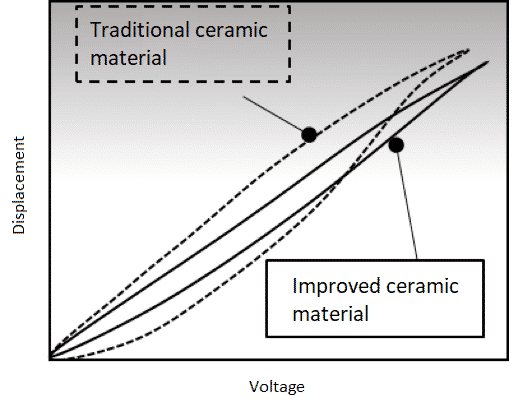
Conventional “super tweeters” are so-called as they reproduce sounds outside the audible range, but this Intime’s variation, thanks to the uncommon material selection in addition to their calibrations, has a different behaviour and reproduces overtones, effectively contributing to the highest-end part of the audible spectrum.
The Miyabi feature “third-generation VST2” of such tweeters. According to mr Watanabe the improvement has to do with adopting dual ceramics, which ensures that the hysteresis characteristics are minimized, while sound pressure sensitivity is maintained.
For example, 3rd VST is supposed to offer richer overtones on piano notes, and crisper notes on a jumping saxophone. Owning a model based on a previous VST iteration (Sora 2) I can testify this is really the case.
2 – Graphene coating
A graphene coating has been applied to the Dynamic Driver unit, which – always according to mr Watanabe – is amongst the reasons why his drivers reproduce mid-high range frequencies with controlled power and good definition.
3 – Brass housings
Unlike what happens on the Sora line, Miyabi housings are made of brass. According to mr Watanabe, this choice contributes to delivery Miyabi’s signature soft, deep sustain and bass reproduction. I don’t know if the cause-effect liaison is right, but the result definitely is good.
4 – HDSS
Another unique (and patented, actually) technology adopted inside Miyabi, as much as inside Ti3, Sora, Sora2 too, is called “HDSS” as in High Definition Sound Standard.
Its purpose is to suppress sound reflections inside the housing, resulting in cleaner output.
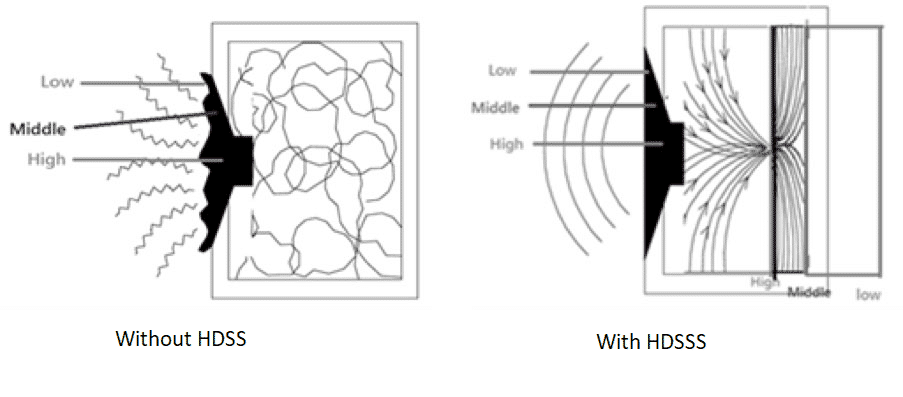
Some sound waves are commonly uncontrolledly reflected inside the housing, impacting onto the dynamic driver diaphragm, causing dissonance from the intended purpose. With HDSS technology, the sound inside the housings is more controlled and does not “invest” the diaphragm randomly, allowing the dynamic driver to move “only” as a consequence to the signal source, as indeed it should.
This – according to Intime – increases sound realism and decreases fatigue. It has a down side though: it tends to purge too much of the high frequencies off the dynamic driver vibration.
This is where a careful calibration between the resolution of the ceramic VST2 and the mid-high range tuning of the graphene coated DD becomes vital, resulting in a bass with a solid outline, harmonious mid-high range and wide spatial expression – as in facts Miyabi does deliver, big time !
At-a-glance Card
| PROs | CONs |
| Organic timbre delivering unique realistic rendering to acoustic music | Genuine acoustic timbre not ideal for some electronic music. |
| Instrument separation unheard on alternatives below 600$. | Some may find timbre too “raw”. |
| Precise imaging. | Some may find treble somewhat grainy, or excessively prominent. |
| Slammy, fast yet textured bass. | In selected situations midbass may partially overshadow male vocals. |
| Organic textured vocals, especially female. | Tip rolling / investigation recommended. |
| Addictive, energetic, unique-timbre trebles. Special prowess on metallic notes. | Unenticing stock cable. |
| Stage projection in all directions, especially horizontal and vertical. | Difficult to source in EU / USA. |
| Easy fitting. | |
| Very inexpensive for its quality. |
Full Device Card
Test setup
Sources: Sony NW-A55 mrWalkman / Questyle QP1R / Tempotec V1 + E1DA 9038D – Spinfit CP-145 tips – Dunu DUW-02S cable – lossless 16-24/44.1-192 FLAC tracks.
Signature analysis
Tonality
Miyabi’s tonality is a mild V, with modest bumps in the midbass and highmids, and unrecessed mids, all well reciprocally calibrated to offer a very pleasant overall presentation.
Most importantly, Miyabi offer an in-cre-di-bly “natural” (“organic”) timbre, so much that some may find it excessively unforgiving, almost “crude”. Acoustic instruments come across sort of raw, unadultered, nature they’d say in Paris – which grants the auditioner a unique “presence on the performance scene” sensation, as if sound were delivered to them prior to any postprocessing combing imperfections or such.
For someone like me listening for 99% of his time to acoustic jazz this is a unique, addictive experience which quickly turns into an invaluable asset.
Sub-Bass
Sub bass is moderately extended, fast, but a bit subduded in power vs midbass. More then adequate to render standup bass.
Mid Bass
Miyabi’s midbass is fast and slammy, yet articulated and textured. It’s evidently bumped up, offering very solid body to standup bass while staying respectful of mids at virtually all times.
Only occasionally and/or on specific musical genres or selections male vocals or guitars may come accross a bit subdued.
Mids
Miyabi’s mids are organic, realistic, very well modulated and textured – this in spite of them not being particularly forward. Pianos, cellos and guitars are very naturally rendered.
High mids are energetic and shiny, but always south of fatiguing – at least in my books, YMMV (we know the drill: highmids are one of those areas where personal sensitivity varies a lot).
Male Vocals
Male vocals, with particular regards to tenors, are very well rendered, textured and credibly organic. Bass voices may occasionally partially conflict with midbass on particularly crowded passages, especially when non-acoustic instruments are involed.
Female Vocals
Miyabi’s female vocals are even better than male: organic, bodied, at times even flutey. Never scanting into sibilance, they take advantage of the driver’s superb highmids tuning.
Highs
Trebles are no doubt one of the two areas on which Miyabi offers their best. I did hear a few other piezo tweeters, but simply not one holds a candle to what mr Watanabe can make his drivers deliver.
There is a veeeery faint “piezo timbre” occasionally emerging, but for the vast majority of the cases Intime’s VST deliver energetic, dynamic, sparkly, quite airy, well detailed and most of all addictively energetic treble.
I like to assume that part of the “organically brassy timbre” result is also due to the housings being made of… brass, indeed.
Technicalities
Soundstage
Miyabi’s stage projection is very good. The room is very well extended horizontally, shows an exceptional height, and very good depth.
Imaging
Helped by outstanding instrument separation, Miyabi’s imaging is neat, precise and very realistic.
Details
Miyabi retrieve tons of detail from all segments of the spectrum. The bass part, while very good in absolute terms for a driver of this price category, almost pales when faced with the special proficiency coming out from mids, vocals and trebles.
Instrument separation
Together with treble, instrument separation is the other area on which Miyabi deliver a quality which can only be found on selected, much higher class (and price) competition.
All voices are spectacularly enucleated from one another, and layered in a way that the auditioner has a very realist sensation of being on the stage, or just in front of it, and can almost “see” the various players, their performance, abilities, and mistakes (!) happening together.
Separation clarity coupled to solid note body similar or better to what Miyabi offers cannot be encountered for my experience until engaging with IEMs the like of Dunu Zen – at +-4 times Miyabi’s budget.
Driveability
Miyabi’s sensitivity is modest so they do call for some non-trivial amping. Nothing excessive, don’t worry, but it’s best not to rely on a mere smartphone in their case.
A piece of good news is however that their impedance is not ultra-low, so there’s a thicker flock of sources, dac-amps and dongles which are able to deliver the power Miyabi requires.
Physicals
Build
Housings are made of solid brass, with the declared intention to deliver a “brass-like”, warm-ish, organic, acoustic timbre.
Their back end is in tortoise-color resin, moulded adopting a japanese tecnique called Takumi. The result is uneven in terms of colouring, resulting in no two units be identical. The resin back-end paired with the brass main chambers make for a quite stylish ensemble. Miyabi is indeed japanese for “elegant, stylish”.
Fit
Fat bullet shapes like Miyabi’s are very easy to fit for me.
Stock tips are good in terms of sound results but I found them a tad too soft, which paired with the housings’ weight, their shape etc, for whatever reason makes my left driver tend to lose its seal inside my left ear.
After the “usual” lenghty and boring rotation amongst a couple of dozen alternatives I settled on Spinfit CP-145.
Comfort
Very subjective. I personally find them extremely comfortable, like for most if not all bullet shaped housings.
Isolation
No concha shielding due to bullet shape, but their “fat” build contributes positively nonetheless.
Cable
In spite of the effort that I’m sure mr Watanabe put on it, too, I wasn’t impressed by the stock cable. After some trials, I settled onto a Dunu DUW-02S which is significantly upgrading the Miyabi in terms of spatial openness, layering and separation.
It’s also important to note that not all third party cables I tried onto my Miyabi clicked the same way, and a couple of them even resulted in unstable connectivity (unlike what happens when the same cable is connected to all other MMCX IEMs I have). Mr Watanabe may want to look into this.
Last but probably not least, I understand Ozeid is now bundling their high end cable (M Kanade) with Miyabi. Looking forward into getting one to check a very likely better pairing.
Specifications (declared)
| Housing | Solid brass housing, complemented with a Takumi-moulded resin back end. |
| Driver(s) | 10mm Graphene coated Dynamic Driver woofer + Laminated Ceramic Vertical Support Tweeter (VST2) |
| Connector | MMCX |
| Cable | Intime “M Sound” 1.2m cable made of OFC wire, with 3.5mm fixed single ended termination. |
| Sensitivity | 100 dB/mW |
| Impedance | 22 Ω |
| Frequency Range | 20-50000Hz |
| Package and accessories | 1 set of 3 pairs (S, M, L) silicon SpinFit eartips, and a snap-button leather strap |
| MSRP at this post time | JPY 20900 (€ 145) |
Comparisons
Tanchjim Oxygen ($ 250)
Miyabi is overall warmer, with an evident accent on midbass compared to Oxygen which is more balanced-neutral, if something with a soft accent on highmids. Miyabi’s brassy timbre and coloration is totally absent on Oxygen, which is mostly transparent.
Instrument separation and microdynamics are in favour of Miyabi everywhere except on crowded midbass passages, where neither – for different causes – is at the industry’s best. Treble rendering is more organic on Miyabi, with special regards to metal instruments – Oxygen on the other hand comes across cleaner if a tad less detailed.
Ikko OH1S ($ 159)
The first thing one notices about OH1S vs Miyabi is the obviously thinner note weight delivered by the former. OH1S sounds leaner and therefore less expressive if also less colored compared with the more energetic, muscular and “thetral” Miyabi.
OH1S DD is faster but not better resolving compared to Miyabi’s so OH1S’s midbass is less inflated but also evidently less textured and organic. Most of all, instrument separation is all in favor of Miyabi. OH1S also has more invasive highmids which may occasionally sound shoutier compared to the energetic but controlled ones on Miyabi.
Ikko OH10 ($ 199)
OH10’s sub bass is more elevated but midbass is less compared to Miyabi. Most of all, OH10’s bass is faster and dryer compared to Miyabi’s so it sounds cleaner on one end, but less expressive and textured on the other. Also, even in spite of such higher cleanness, Miyabi’s separation all over the spectrum including the bass is better compared to OH10’s.
OH10’s note weight is also leaner and the timbre is not brassy. Wind instruments and hihats and crashes sound much less vivid compared to Miyabi. Mids are much more recessed and vocals are not even comparable (by design, I would say).
Dunu Zen ($700)
Zen’s bass is faster compared to Miyabi’s, and more controlled. Instrument separation, though superb on Miyabi, is better on Zen all along the spectrum. Zen’s tonality is warm, but its timbre is quite neutral. Miyabi is warmer, not only due to somewhat fatter midbass but mainly due to heavier note body on the mids and highmids, and its brass-metallic timbre.
High mids are cleaner on Zen but also less energetic and expressive. Miyabi is definitely airier up above. Zen has a better detail retrieval all over the spectrum, although not by the same margin as its higher price tag might suggest.
Considerations & conclusions
I can’t name many IEMs costing less than $5-600 and delivering an equivalently pleasant mix of highly refined technicalities, organic, lifelike timbre and energetic presentation like Miyabi do. And even less at Miyabi’s sub-200$ price.
To me this is excellent material. I initiated the process to collect cobloggers’ opinions to consider sticking Miyabi on our Wall of Excellence.
The Miyabi sample I reported about in this article is a personal purchase, no contact incurred with Mr Watanabe.
Our generic standard disclaimer.



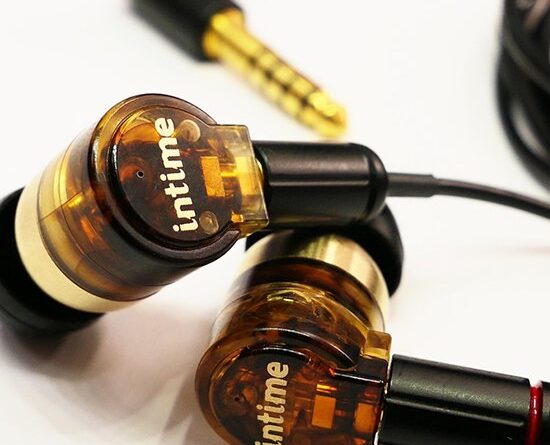

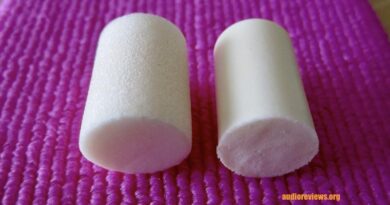
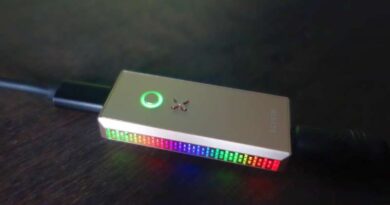
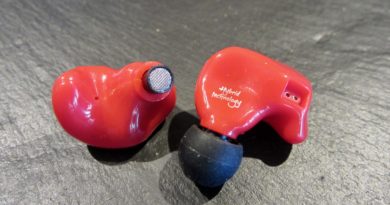
Pingback: Intime Miyabi – SiliconSoundZ
Thanks for the article very interesting and inspiration
Hi there, I was wondering if you know what filters or what density it uses? I own a pair of the Miyabi MK1 myself but unfortunately lost the left one while I was cleaning the oxidation. I want to buy new ones but I have no clue what type or density it is.